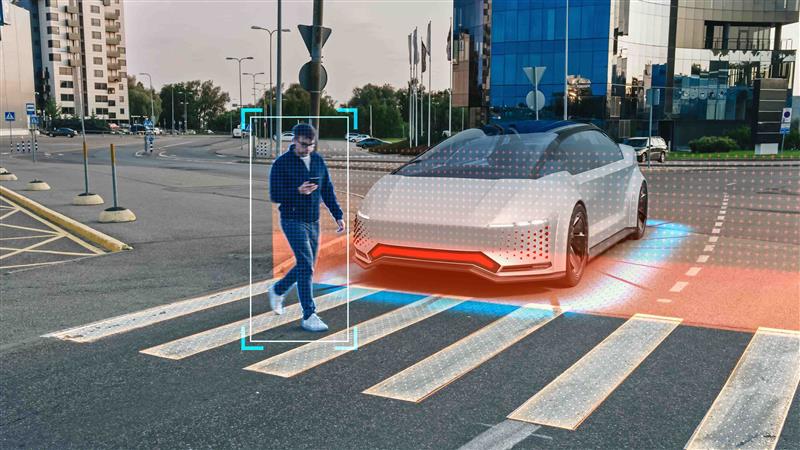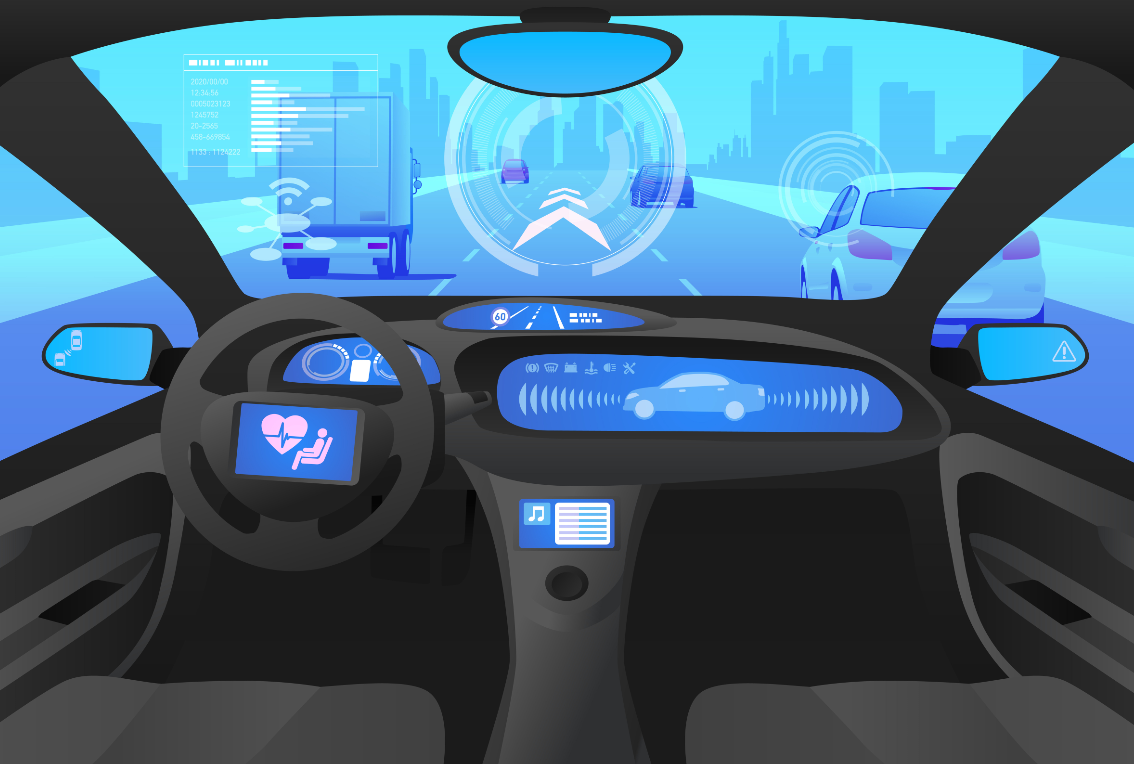Sensor and AI solutions already provide greater safety, more efficient traffic routes, and new modes of transportation. Established assistance systems such as the turning assistant for trucks directly improve road safety.
Autonomous Mobility
Imaging LiDAR
LiDAR, as imaging distance sensor technology, has significant potential in many fields of mobility beyond its application in autonomous or assisted driving, as it can sensorily imitate the three-dimensional view of the human eye.
At Fraunhofer IMS, LiDAR is considered from optical components to the application perspective. Several detector chip designs have been successfully implemented, paving new paths in scaling methods (3D integration) and in the development of the world's lowest-noise SPAD single-photon detectors.

Simulation environments and virtual testing methods, camera setups, and efficient signal processing always aim to enable applications close to physical or technical limits. With this expertise, we are now able to create a comprehensive picture and support you in the use or new development of a LiDAR system.
Our services:
- Solutions for specific measurement challenges such as extremely short measurement durations in a few milliseconds, high dynamics, or low light imaging
- System design of a new LiDAR based on existing components
- Consultation on the state of the art and the existing patent situation

Vital Data of the Driver
Knowing the vital data of the driver is highly advantageous for increasing road safety. In accident prevention, the data can play a crucial role by identifying poor health conditions of drivers in a timely manner. In the future, intoxications caused by alcohol and drug consumption are also expected to be detected before driving by analyzing heart and breathing rates. During driving, these measurements can complement eye-tracking technologies to monitor the driver's attention and detect drowsiness early.
This technology can also be applied in the medical field. Over a longer period, these methods can capture health trends for preventive medicine.
Car ride demonstration with contactless vital data monitoring of the driver. © Fraunhofer IMS
The touchless determination of vital data is based on the analysis of camera images taken with the already installed interior camera. This has the enormous advantage that the driver is neither irritated nor distracted from traffic during the measurements.
Fraunhofer IMS continuously works on advancing vital parameter detection to cover a wide range of scenarios with high measurement quality. Physical or technical measurement limits are examined and successfully overcome with innovative ideas. Our AI algorithms already allow real-time measurements of, among other things, the heart rate and respiratory rate of drivers under real conditions. Since our software solution runs on all common platforms (Windows, Linux, Android), the algorithms can be integrated into existing driver monitoring systems (DMS) with minimal effort.
Our services:
- Implementation of the algorithm in test vehicles for recording and analyzing relevant data sets
- Setup of a reproducible measurement setup for successful benchmarking of previous implementations
- Joint development projects to expand the capabilities of vital parameter detection
- Consultation on the future technical implementation of further vital parameters such as blood pressure
- Application of the algorithm to other modes of transportation and in public spaces
